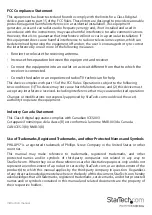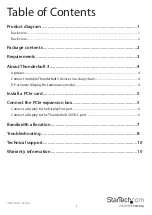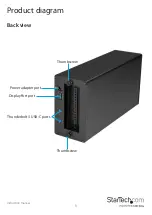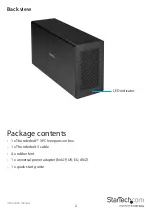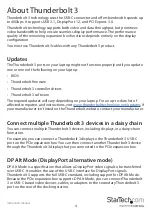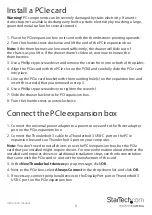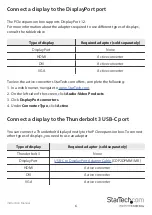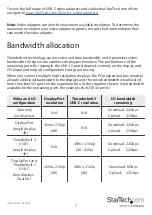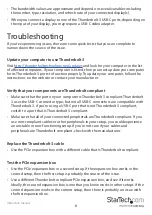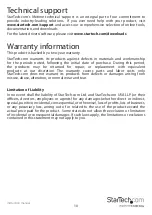
Instruction manual
4
About Thunderbolt 3
Thunderbolt 3 technology uses the USB-C connector and offers bandwidth speeds up
to 40Gbps. It supports USB 3.1, DisplayPort 1.2, and PCI Express 3.0.
Thunderbolt technology supports both video and data throughput, but prioritizes
video bandwidth to help ensure seamless display performance. The performance
quality of the remaining expansion box functions depends entirely on the display
configuration.
You must use Thunderbolt 3 cables with any Thunderbolt 3 product.
Updates
The Thunderbolt 3 ports on your laptop might not function properly until you update
one or more of the following on your laptop:
• BIOS
• Thunderbolt firmware
• Thunderbolt 3 controller drivers
• Thunderbolt 3 software
The required updates will vary depending on your laptop. For an up-to-date list of
affected computers and instructions, visit
www.thunderbolttechnology.net/updates
. If
your manufacturer isn’t listed on the Thunderbolt website, contact your manufacturer.
Connect multiple Thunderbolt 3 devices in a daisy chain
You can connect multiple Thunderbolt 3 devices, including displays, in a daisy-chain
formation.
For example, you can connect a Thunderbolt 3 display to the Thunderbolt 3 USB-C
port on the PCIe expansion box. You can then connect another Thunderbolt 3 device
through the Thunderbolt 3 display that you connected to the PCIe expansion box.
DP Alt Mode (DisplayPort alternative mode)
DP Alt Mode is a specification that allows a DisplayPort video signal to be transferred
over USB-C. It enables the use of the USB-C interface for DisplayPort signals.
Thunderbolt 3 supports the full USB-C standard, including support for DP Alt Mode.
Because the PCIe expansion box supports DP Alt Mode, you can connect Thunderbolt
3 or USB-C based video devices, cables, or adapters to the secondary Thunderbolt 3
port on the rear of the docking station.


